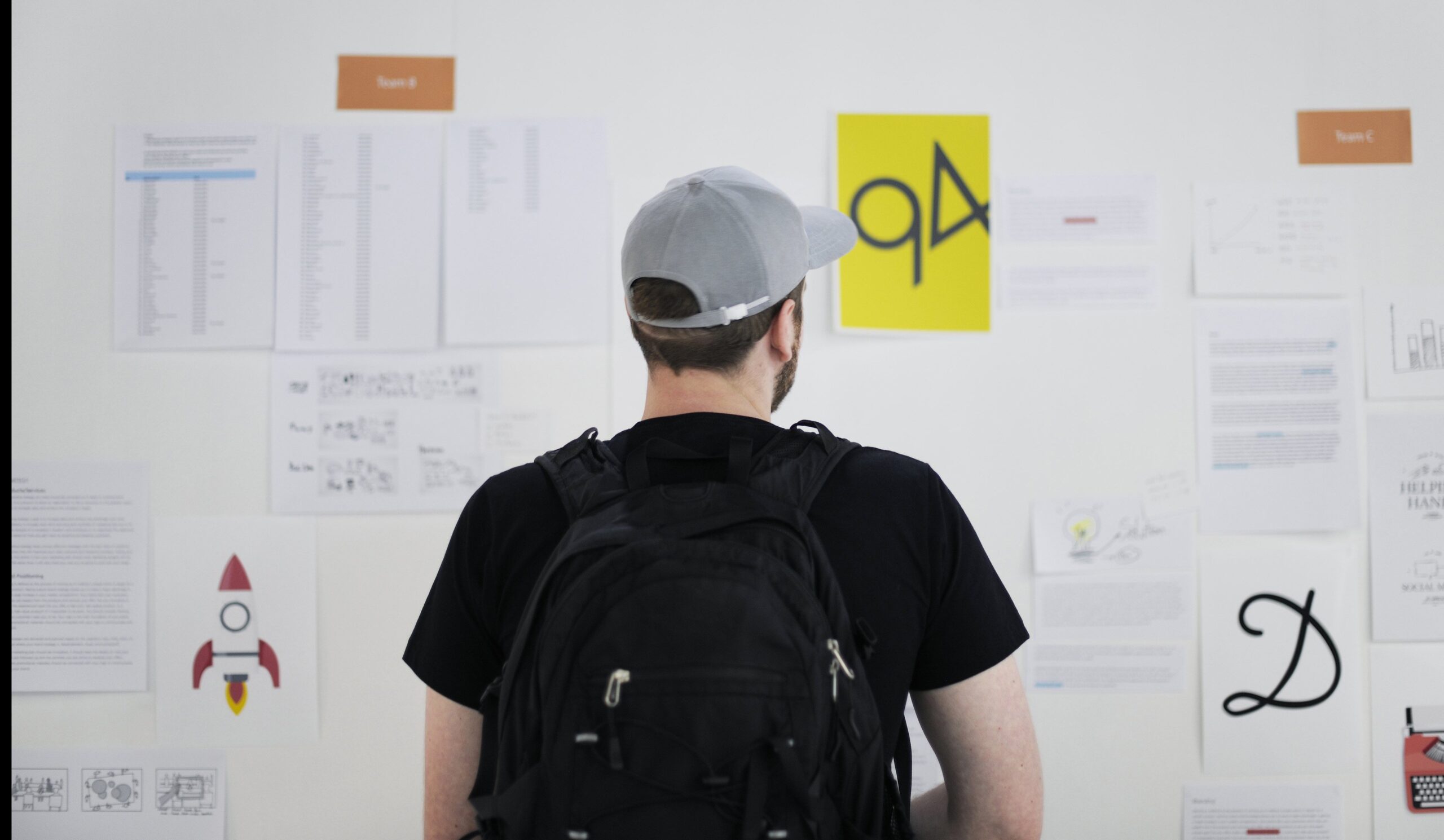About 25 miles east of Los Angeles sits Mt. San Antonio College(Open Link in new tab) (affectionately known as Mt. SAC), one of the largest community colleges in California. Mt. SAC has a diverse student population; 75% of students receive some financial aid, and 53% attend part-time. Not only does Mt. SAC offer a wide range of degrees and certificate programs, but also it is consistently one of the top 10 schools in California for transferring students to four-year colleges and universities.
In 2016, Sun Ezzell, a professor of writing, stumbled across information on the Right Question Institute’s(Open Link in new tab) Seminar on Best Practices in the Question Formulation Technique (QFT). Ezzell was eager to attend and learn how she could create a classroom environment in which students learn to ask more and better questions. She left the seminar energized and ready to implement the QFT in one of her summer courses. Ezzell was thrilled with the results after her very first use, tweeting(Open Link in new tab):
“Yesterday a student who hadn’t said a word all summer led his group in identifying open and closed Qs during the QFT process.”
She successfully used the QFT a few more times throughout the summer; students asked questions on human rights(Open Link in new tab) as they prepared to read Night, by acclaimed author Elie Wiesel. They also inquired on freedom of speech(Open Link in new tab), women’s rights(Open Link in new tab), education rights(Open Link in new tab), and discrimination(Open Link in new tab).
That fall in her writing fundamentals course, Ezzell came up with a novel way to integrate the QFT for two different purposes. First, she planned to use the QFT so students would formulate their own questions to spark discussion on Alfie Kohn’s Educational Leadership article, “The Case Against Grades(Open Link in new tab)” by writing their response to the article using their questions as a guide. Second, Ezzell wanted students to consider for themselves whether they should switch from letter grades to pass/fail for this course.
Designing a Question Focus
Ezzell assigned the Kohn reading to her students as a homework assignment. As many professors and lecturers know, it is rare for an entire class to complete reading assignments as requested (even with legitimate extenuating circumstances that may prevent them from completing all assignments on time). Knowing that she would want all students to productively engage with the assignments and the thinking ahead regardless of whether they read or not, she crafted a clever workaround for the Question Foci.
Students who completed the reading would be presented with the statement, drawn from the title of the assigned reading: “The Case Against Grades.” Students who did not complete the reading would receive a more simple one-word phrase that they could easily dive into: “Grades.” Her thinking was that all students have had both positive and negative experiences with grades, and their questions would fold in nicely with the questions from students who read Kohn’s piece.
Introducing the QFT
As it was the beginning of the semester, Ezzell walked students through all steps of the QFT, from introducing the rules, considering challenges, producing and working with their questions, prioritizing, and reflecting.
Producing Questions
As two groups, students asked questions about their respective Question Focus. Students’ questions tackled the statements from many different angles — student affect and feelings on grades, necessity, relevance to them, transferability beyond school, and quality of grading schemes. The questions are noticeably similar at times as both groups of students explored advantages and disadvantages of grades for their learning.
Group 1 Question Focus: The case against grades
- Why are students intimidated against grades?
- Is the grading process needed?
- How does the grading system affect students?
- Why do we have a grading system?
- Does the grading system need improvement?
- Why is it challenging to get good grades?
- Why do students think school is challenging?
- Why do students focus more on grading than learning?
- Does the grading system help students in life?
Group 2 Question Focus: Grades
- Should our success be based on a letter grade?
- Is a grade more important than learning the material?
- Are grades as valuable as positive as the educational system thinks it is?
- Do grades have a positive or negative effect?
- Why should a grade determine your knowledge?
- Why is it challenging to get good grades?
- What’s the effect of our grades in our personal life?
- Can grades stop us from striving to be our best?
- What are the consequences of grades?
Categorizing Questions
First, students categorized their questions as either closed (can be answered with a “yes,” “no,” or with one word) or open-ended (cannot be answered with a “yes,” “no,” or with one word). Ezzell had students reflect on the advantages and disadvantages of both types of questions. Then, students changed one closed-ended question to become an open-ended question, and one open-ended question to become a closed-ended question. For instance:
“Why should a grade determine your knowledge?” was changed to “What are your thoughts on our grading system?” and “Can grades stop us from striving to be our best?” was changed to “Do students focus more on grading than learning?”
Interestingly, as students moved forward with the class discussion and writing assignment, Ezzell was creating the space for students to pivot away from thinking about grades in a traditional sense, where they worried about what others thought of their work. Instead, they began to think for themselves why grades may or may not be beneficial for their path ahead.
Prioritizing Questions
Each group selected their three most important questions.
Below are the questions students prioritized:
- Group 1
2. Is the grading process needed?
5. Does the grading system need improvement?
8. Why do students focus more on grading than learning? - Group 2
2. Is a grade more important than learning the material?
3. Are grades as valuable as positive as the educational system thinks it is?
5. Why should a grade determine your knowledge?
Next Steps
Students began talking about a writing assignment on the reading. For some students, asking questions helped them digest an article that has some academese. As one student shared, “I discovered that by asking questions about the article it was easier to understand the article and the meaning behind it.” Another student eloquently reflected, “I learned that by doing the question exploration it can help you not be stuck when you do not understand the material.” Transitioning into the writing assignment, students found it was beneficial to think in questions as a way to debrief and to distill some of their own thinking and what they had learned from the piece.
Through reading the article, as well as asking questions and unearthing some of their own perspectives on the matter, students were able to think critically on the issue and make an informed decision as it pertained to their own circumstances.
As a class, the priority questions helped lead to a discussion about feedback and how they can use or share feedback to productively advance classroom learning. Ezzell was able to better understand students’ thought processes on the topic. And, impressively, some students did indeed switch from letter grades to pass/no pass — a decision that many students in higher education do not consider in depth if at all.
Students benefit when they are afforded space to reflect on what they learned and how they learned it. It allows everyone to compare what they know now that is different than when they started, and to identify for themselves their role in the process.
All students were asked to write on a piece of paper what they learned from the QFT. One student was floored by how equitable the experience was. Two other students discovered that they were thinking and learning in new ways. One said, “I learned I can come up with questions very quickly which is good because it means thinking and creativity is improving and growing.” According to the other, “When we come up with our own questions, we think more deeply.” Ezzell also was able to glean how students perceived the exercise, what worked especially well, and how she might fine-tune the experience in the future.
College Classrooms Filled with Questions, Critical Thinking, and Collaboration
It has been amazing to have students who experienced the QFT with me this summer take my other classes this fall. They are comfortable not just with the QFT, but they seem so comfortable collaborating with classmates, taking a leadership role in the class, and volunteering to share out from their groups. I can see so many ways in which they are growing and owning their learning in new ways like never before. -Sun Ezzell
The skill of question formulation benefits all learners – kindergarteners, high school students, students at a community college or four-year university, adult learners. It can be developed and honed over time and as students continue to ask questions they become more proficient at thinking critically, analyzing text, and navigating new ideas. In turn, students learn that they have a voice in the classroom, work well with one another and invite collaboration, and help drive the learning process.
Community college educators are in a unique position where they are working with students who potentially have different trajectories ahead, but by teaching a skill that is so widely applicable for learning and for life, Ezzell was able to most effectively use the QFT as a part of her course offering.







